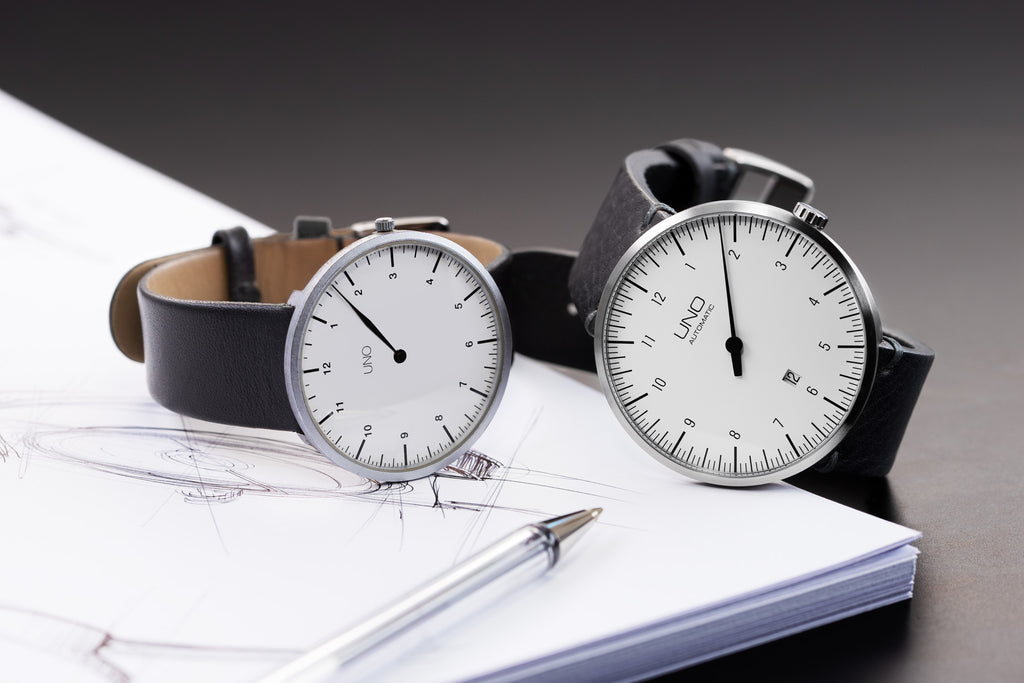How our one-hand watches change the perception of time
It is unknown when the first mechanical watch was constructed - in any case, the term watchmaker is first mentioned in a French document in 1269. The mechanical watches of that time were far from being as accurate as they are today. For centuries they remained one-hand watches, i.e. watches with only one hand, because minute hands would have been technically too complicated. Apart from that, there was also no real need for a detailed display.
Until the end of the 17th century, mechanical single-hand watches had to be readjusted daily by means of the exact sundials. The advantages of mechanical watches were obvious despite their costly maintenance: they were independent of daylight and could be seen from afar on towers. In the Middle Ages, rich cities competed constantly for ever more magnificent clocks with ever better mechanics. Outwardly, these tower clocks had an immense representative significance.
One-hand watches: To be seen until today at old churches and town halls
 Einzeigeruhren auf Kirchen in Lübeck und Ballum
Einzeigeruhren auf Kirchen in Lübeck und Ballum
Fotos Wikimedia Commons: Andreas Geick - Eigenes Werk [CC BY-SA 3.0] und Fritzbruno [CC 3.0]
From then on, the public clocks regulated the daily routine in the community. They revolutionized the sense of time of people in the Middle Ages: the subjective sense of time of the individual was replaced by a measurable and absolute quantity, the time of day. In some old churches and town halls one can still see one-handed clocks today - because it was not until the end of the 17th century that more accurate clockworks were developed. These made the use of minute hands possible and thus offered serious competition to the one-hand clock. In addition to the trend towards greater accuracy, the watches also became ever smaller.
From the one-hand church tower clock to the one-hand watch on your wrist
Peter Henlein invented a tension spring that made it possible to dispense with a pendulum that set the pace. In 1510, Henlein used this extension spring to produce the first pocket watch based on the single-handed clock: watches were thus smaller and lighter than ever before. Pocket watches had to wait much longer than the large tower clocks for the minute hand and remained single-handed watches. The reason for this is the miniaturized movement, which initially lacked the necessary precision. As an object of jewelry, the pocket watch initially appeared in all possible forms, such as the cross, shell or star.
It was not until around 1800 that wristwatches were developed, initially for ladies. Now the mechanics had also progressed so far that watches were no longer designed as one-hand watches but as two-hand watches from the beginning. It was not until the First World War that wristwatches also gained acceptance among men, as they were quicker to handle than pocket watches. The constant visibility of the time changed the sense of time after the war: the compulsion to be punctual and the associated time pressure have since taken on alarming features that seem increasingly normal to us today. The trend towards ever more accurate watches has continued ever since.
BOTTA watches: Deceleration of time through modern one-hand watches

Klaus Botta recognized already in the eighties that an ever more precise indication of the time brings stress rather than relief to humans. With the UNO, the first one-hand watch of modern times, he set a counter-trend in 1986. According to Botta, a single hand can in principle be read more easily and quickly than multiple hands. At the same time, the reduced representation of time has a calming and decelerating effect on people. One-hand watches from BOTTA design are a symbol of a relaxed and conscious approach to time, in which the human being is the measure of all things.











1 comment
Moin,ich bin platt und zugleich begeistert von dieser ein Ziffer Uhr.
Habe es in Mögeltönter in DK gelesen und wollte nun mal forschen wie diese Uhr funktioniert..Klasse bin froh es gelesen zu haben DANKE werde mir aber auch eine kaufen.
Herzliche grüsse aus kiel H.Jürgensen